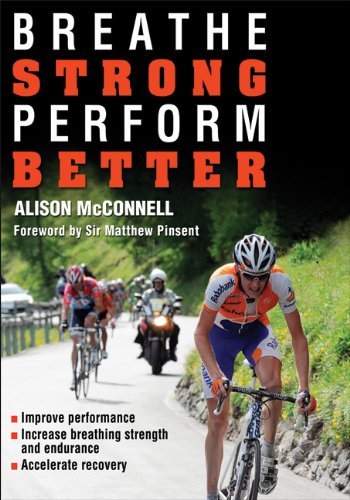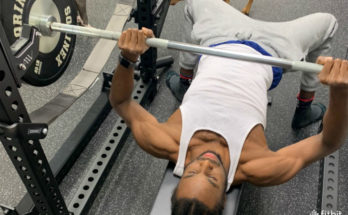You pay attention to the steps you take, write down how many reps and sets you complete, and take note of how deep you stretch, but what about monitoring your breath? When it comes to fitness, the focus tends to fall on active minutes and “sweat time.” As it turns out, how you breathe between movement matters—a study from the University of Portsmouth found that practicing proper breathing could improve performance by as much as 15 percent. Here’s how to master your inhale and exhale for running, yoga, and lifting with expert advice.
The Best Way to Breathe While Running
Running might seem to be powered by legs, but it’s also core-focused. In her book, Breathe Strong, Alison McConnell, PhD, professor of exercise science at Bournemouth University in England, says that the instability ofrunning means that the core muscles have to work hard both to protect the spine from damage and to help you
 remain upright as you rack up steps. Properly breathing through your diaphragm is key. Inhaling should cause your diaphragm to contract and move downward; your chest cavity should expand, allowing you to fill your belly with air.
remain upright as you rack up steps. Properly breathing through your diaphragm is key. Inhaling should cause your diaphragm to contract and move downward; your chest cavity should expand, allowing you to fill your belly with air.
A Common Mistake: Chest breathing and taking short, choppy breaths can sideline you fast. Instead, pair belly breathing with rhythmic breathing.
Fix It! Focus on belly breathing, filling your diaphragm with air and causing your chest cavity to expand for a deeper, smoother breathing pattern. Aim to inhale for three breaths, breathing out for two as you run. New to running? Implement the run-walk-run method to help you catch your breath by breaking up 60-second running spurts with 30-second walking breaks.
The Best Way to Breathe During Yoga
You can’t get through a yoga class without an instructor reminding you to pay attention to your breath. But the idea of “proper breathing” might not be so cut and dry. It’s more about finding your cycle. “There isn’t a ‘right’ way to breath, but there’s definitely a wrong way,” says Kala McDonald, a Los Angeles-based yoga instructor and wellness blogger. “Breath should be a focal point and the soundtrack of your practice. I often encourage my students to follow the tide of their own breath, allowing movements to be initiated and guided by their inhales and exhales.”
A Common Mistake: The biggest mistake aspiring yogis make is focusing on their physical body rather than where their breath is internally. “It becomes more important to get into a big pose, through a difficult asana, or to get through a challenging practice, and being conscious of the breath falls to the background,” says McDonald. While breathing is an automatic, uncontrolled, and subconscious act—something you might take for granted in daily life, it should be purposeful while practicing yoga.
Fix It! The simplest thing to do is to consciously direct your attention to your breath and tailor your poses as needed. If your breathing feels erratic or uneven, change what you’re doing physically until you have it back under control, says McDonald. “If holding a deep backbend takes your breath away or causes you to hold your breath, you need to scale back to gentler, more accessible movement,” she says. Rejigger your body, find your breath in a simpler pose, and then (when you’re ready) work your way into deeper versions.
The Best Way to Breathe While Lifting Weights
Breathing during resistance training is different than the way you should breath during aerobic training. “It’s more like modified breath holding, as opposed to the steady breathing pattern you’d have while running or doing yoga,” says Joel Seedman, PhD, a strength coach and nutritional counselor. “When lifting, you’re trying to stabilize your spine and one of the best ways to do that is to have a momentary—or several-second—breath hold before initiating the eccentric (or lowering) phase of a heavy moment.”
This holds true for free weight, isolation movements as well. “With a higher rep range, for something like biceps curls or shoulder presses, you might need to breathe a bit between the reps themselves,” says Seedman. “If you do, think of sipping air through a straw, and breath at the top of each rep.”
A Common Mistake: Taking in long, labored breaths as you lift. This causes you to lose that full-body tension, putting strain on surrounding joints and structures.
Fix It! Practice breathing with a simulated boxing punch. The act of contracting your muscles as you breath in, and exploding at the punch (or the top of the movement), is a great way to get the hang of how you should be breathing when you lift. Imagine this: “As you’re about to pull back for a punch, inhale,” says Seedman. “Hold that breath for a second or two (as you would do with strength training), and then punch forward with your fist. As you start to finish the punch, exhale. “This practice exercise will set your muscles as you prepare for the eccentric (or lowering) phase and help you work on exploding during concentric (or lifting) portion of the movement.”
The post Make The Most Of Fitness By Mastering This One Technique appeared first on Fitbit Blog.




